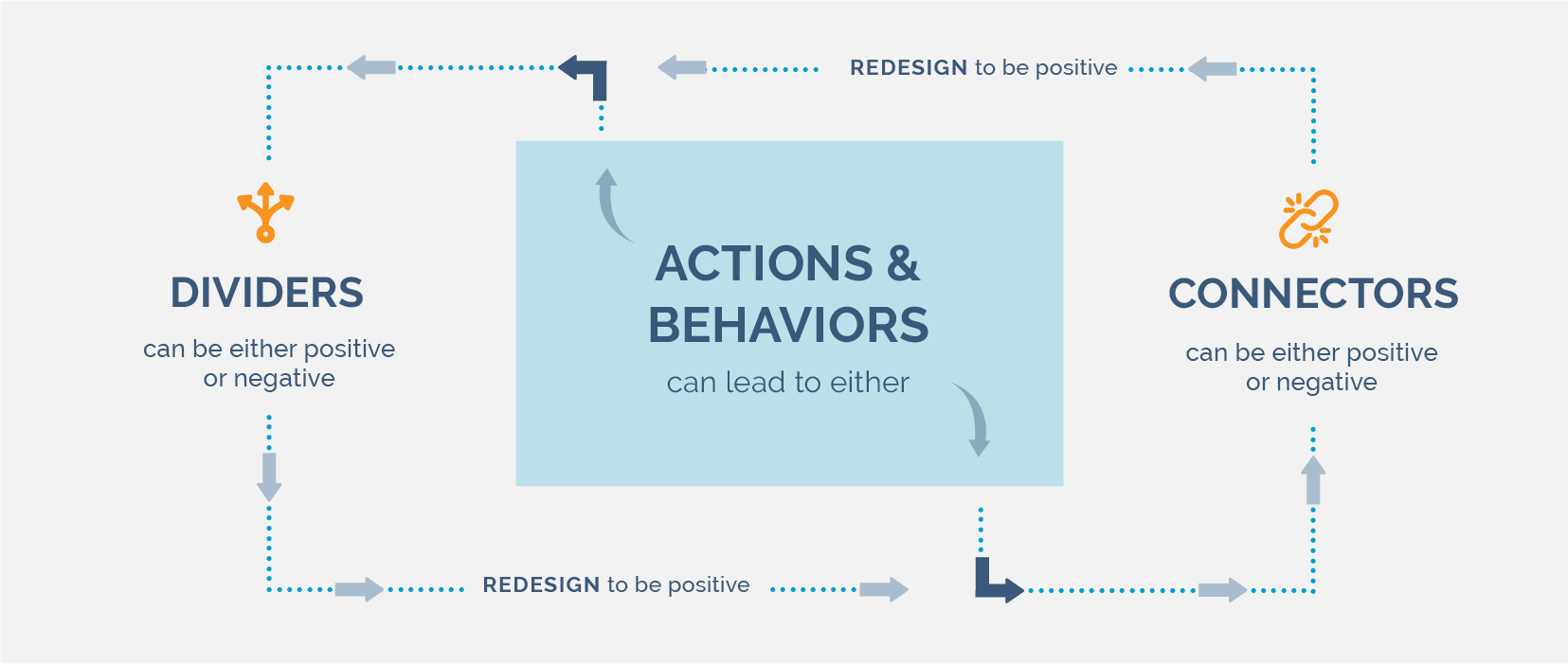Implementing a project to prevent or counter violent extremism has the potential to put you, your project, and your community in harm’s way. Many well-intentioned projects addressing sensitive issues such as VE have gone wrong because their designs were not conflict sensitive. Applying a conflict-sensitive approach is a vital step towards reducing any unintended consequences that could undermine your overall objectives and chances for positive impact.
Any project (whether it be development, humanitarian assistance, and/or peacebuilding) has the potential to support either conflict or peace. Therefore, to ensure conflict sensitivity, projects need to take steps to amplify their positive impact and minimize their negative impact. The “What” and “How” of Conflict Sensitivity, as summarized by International Alert, is provided in the table below:
The "What" and "How" of conflict sensitivity
| What to do | How to do it |
|---|---|
| Understand the context in which you operate. | Carry out a conflict analysis and update it regularly. |
| Understand the interaction between your intervention and the context. | Link the conflict analysis with the programming cycle of your intervention. |
| Use this understanding to avoid negative impacts and maximize positive impacts. | Plan, implement, monitor, and evaluate your intervention in a conflict-sensitive fashion (including redesign when necessary). |
The Do No Harm (DNH) approach is a conflict-sensitivity approach that is well suited to projects working in conflict settings. DNH can be integrated into most of the stages of a project cycle. The goal is not just to ensure your projects don’t fuel drivers of conflict or put you, your staff, and your beneficiaries at risk, but to ensure that your project strengthens connectors to prevent violent conflict or extremism.
The core of the Do No Harm framework is an analysis of dividers and connectors that damage or build relationships between groups. Dividers are sources of tension, mistrust, or suspicion in a community that have in the past or may in the future turn into intergroup conflict. They prevent positive relationships from taking place. Connectors are sources of cohesion and trust in a community. Connectors demonstrate the local capacities people have for peace and serve to enable positive relationships among diverse people.
- People cannot be dividers or connectors. While some people have an interest in warfare and can benefit from conflict, the things people say and do with and to one another are the dividers and connectors.
- People aren’t necessarily good or bad. It’s their actions that can be positive or negative.
- Not all connectors are positive. Sometimes the factors that connect people across conflict lines are hardships, trauma, or discrimination. Although we might not seek to support these factors through our project activities, they can sometimes bridge differences and create opportunities for collaboration.
SAVES is an acronym representing the five main categories of an analysis of dividers and connectors. The five categories are:
The Six Lessons of Do No Harm
The Do No Harm Project was a collaborative learning effort led by CDA Collaborative Learning Projects. Thousands of aid workers, donors, and communities shared their experiences of aid in the context of conflict. Based on collective experience, the following six lessons were seen to be universal:
A conflict-sensitive approach is valuable during each phase of the project cycle (Assess, Design, Implement, M&E, and Learn). Use the DNH framework during the Assess phase to identify connectors and dividers, during the Design phase to identify possible negative impacts or possible entry points for project activities, and during Implementation to regularly assess and understand Dividers and Connecters and how they interact with your project. Finally, apply the framework when monitoring, evaluating, and generating learning from your project to examine if the project is causing unintended negative impacts.
To get yourself started assessing Dividers and Connectors, we recommend following the framework in these two worksheets.

After using the worksheets above to prioritize the most relevant Dividers and Connectors in your project context, consider the following questions in the Design phase:
- How can these Dividers or Connectors be changed? In other words, what are ideas to decrease/prevent those Dividers and ideas to increase/support those Connectors?
- What can your team do to have a positive impact? What are you doing that is having, or could have, a negative impact? Why is that negative impact happening? What can you change to affect the impact? Understanding actions and behaviors will help inform your implementation strategy (discussed further in the Implement Module).
- What options and opportunities are linked to the indicators you developed in Step 2 during the Dividers and Connectors assessment in the Assess Module?
- How will you monitor changes caused by your project? This will help inform your monitoring and evaluation strategy (discussed further in the M&E Module).
- If a change does not occur, do you have another option? Do you have a process for learning why a change has not had the impact you expect? This will help inform your learning plan (discussed further in the Learn Module).

In addition to those practical exercises, the Conflict Sensitivity Consortium provides a useful overview of how to think about integrating conflict sensitivity into all aspects of your organization’s operating procedures and programming. These are included in the How to Guide to Conflict Sensitivity.
This guide can be useful in assessing your organization’s approach to conflict sensitivity and in identifying potential areas for improvement.
For more information on how to conduct a conflict-sensitivity capacity assessment, refer to the tool linked below.
| How To Guide to Conflict Sensitivity Conflict Sensitivity Consortium |
| Do No Harm and Risk Guidance Note CDA's DNH Tool |
| 2010 Do No Harm Guidance Note: Using Dividers and Connectors CDA's DNH Tool |
